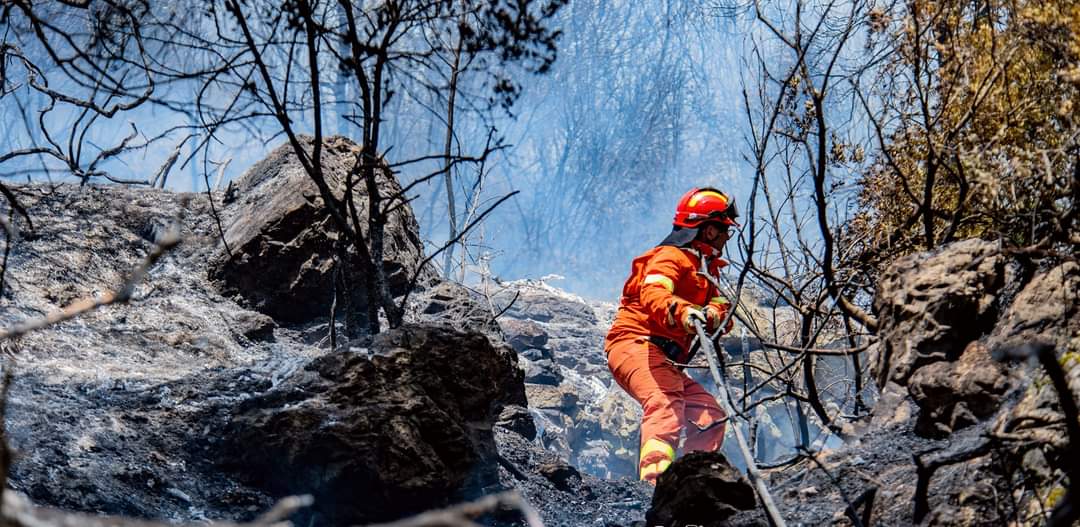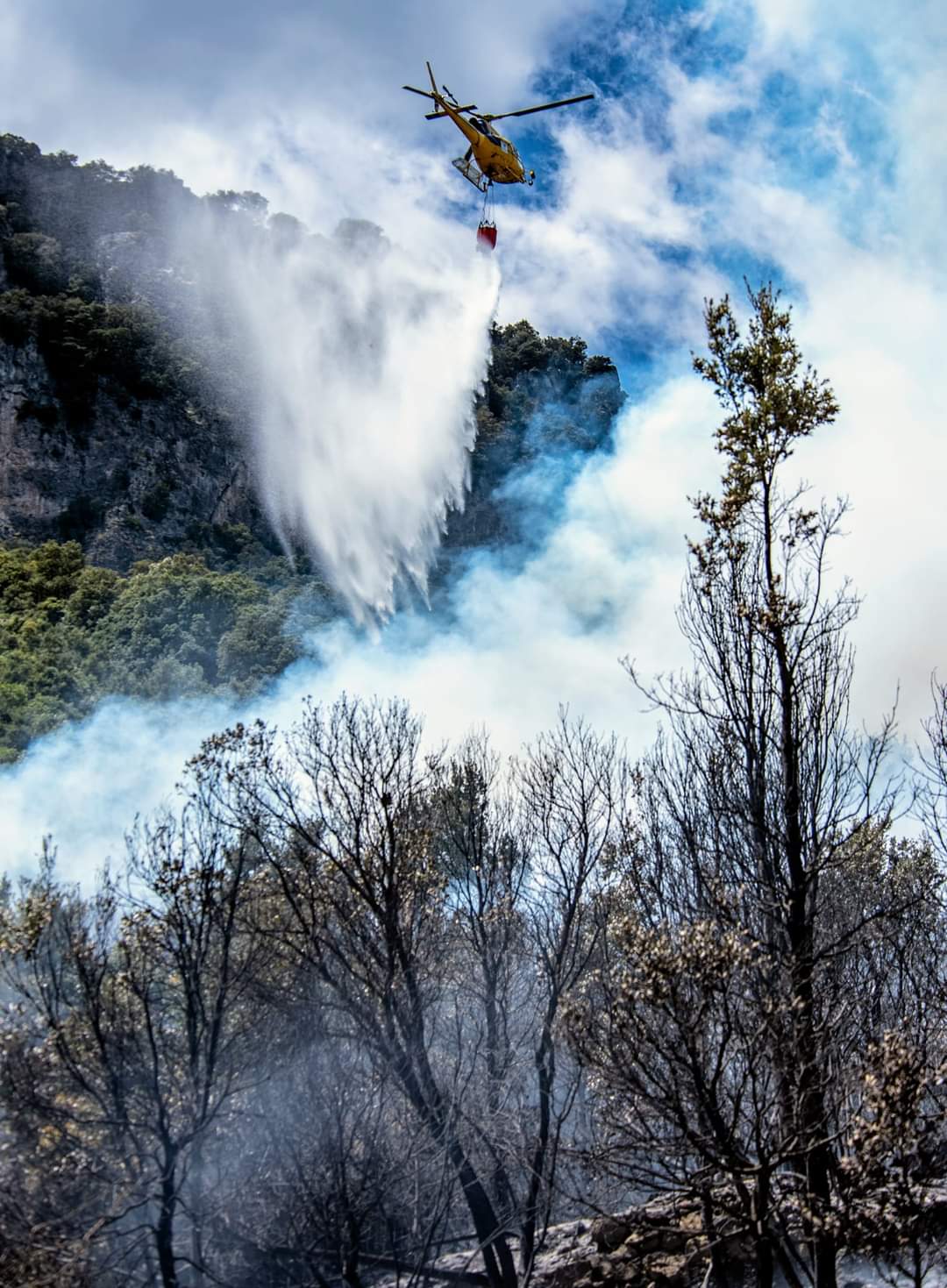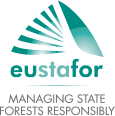Forest Fires in Europe: A Growing Challenge
Forest Fires are not what they used to be
Forest fires have always been a natural element in European ecosystems, playing their role in shaping landscapes, renewing habitats, and fostering biodiversity. However, in recent decades, the frequency and intensity of forest fires in countries like Spain, Portugal, Italy and Greece, as well as parts of Central and Eastern Europe have notably increased. This shift can be attributed to a combination of changes in environment as well as in socioeconomic factors. Forest fires are a rising threat for all forest owners, private and State Forests alike, and many of the consequences touch every one of us Europeans. Some impacts, like climate change, are a global challenge too.

Climate Change, Urban Migration and Human Impact: Catalysts for Increased Fire Risk
Climate change has led to warmer temperatures, prolonged droughts, and unpredictable weather patterns, all of which create the perfect conditions for forest fires. Higher temperatures and extended dry periods make forests more susceptible to ignition and rapid spread of fire. In many parts of Europe, such as the Mediterranean region, the “fire season” has extended beyond the traditional summer months, spanning from early spring to late autumn.
Simultaneously, people moving from rural areas to urban centers has resulted in decrease in maintenance and management of forested areas. Abandoned agricultural lands and less human intervention in forests means that there is more accumulation of dry vegetation, which serves as fuel for fires. Additionally, this rural depopulation leads to a reduction in the number of local fire brigades and community efforts to control small fires before they escalate.
While natural factors play a significant role, human activity remains a leading cause of forest fires in Europe. Whether sparked by discarded cigarettes, poorly managed campfires, or deliberate arson, human actions often trigger fires. As more people settle in or near wooded areas when the urban areas expand, the potential for accidental fires rises.
Multi-faceted Impact of Fire
Forest fires have significant ecological, economic, and social impacts. Economically, forest fires lead to losses in timber, recreation, carbon sinks and biodiversity. These losses can disrupt the supply chain for wood-based industries, impacting local economies and livelihoods dependent on forestry. Infrastructure damage, including electrical cables, buildings, and roads, further destabilizes rural livelihoods.
Environmentally, forest fires result in emissions of particles and gases (including CO2), contributing to climate change and reducing carbon sinks. The loss of mineral nutrients and the destruction of the soil’s organic layer weaken the area’s long-term productivity. Additionally, fires alter water infiltration rates in the soil, making burnt areas more prone to erosion, soil loss, and landslides.
The recovery of these ecosystems can take decades, perpetuating a cycle of environmental degradation.
Not only forest fires, but also abandonment of rural areas can reduce the supply of wood material to the market, causing the wood-processing industry to seek more supply-secure locations. This leads in turn to new unmaintained forests, which are more prone to fires: the vicious circle is ready.

Socially, fires result in the loss of human lives, displacement of populations, and destruction of properties. Urban-forest interface areas are particularly vulnerable, facing high potential damage and difficult firefighting conditions.
State Forests – fire management, prevention and – utilization
State Forests are not free from the threat of forest fires. In many cases State Forest governed areas are more remote than private forests, and they can be on more geographically challenging sites. Especially mountain areas with sparse road networks are high risk locations in terms of fire management.
EUSTAFOR Member States have developed a manifold of fire control and prevention methods, well suitable for local conditions. Methods vary from increased presence during the fire season, to the use of highly advanced technology, like thermal imaging. Close cooperation with other authoritative, adjacent areas’ private forest owners and tirelessly informing the public about the risks are widely used measures. Preemptive forest management and long-term planning, like via regulating tree species composition are also used.
European State Forests contain a multitude of variation. In boreal forests, fire plays a crucial role in maintaining ecosystem health and biodiversity. These ecosystems have evolved with fire, and many plant and animal species depend on periodic burning for regeneration and habitat renewal. Paradoxically, in the boreal region, fire control is extremely efficient and thus, to mimic natural fire cycles, it has become necessary to carry out prescribed burnings to create habitats for several threatened fire-dependent species.
In conclusion, diverse approaches are a must and one single solution doesn’t solve all the fire-related problems of every EUSTAFOR Member State. A generally effective approach does exist though: Sustainable Forest Management can be seen as an effective way in State Forest to prevent and to mitigate the impact of forest fires.
The Role of Sustainable Forest Management
Sustainable forest management (SFM) gives foresters and State Forest Organisations tools to prevent and mitigate the effects of forest fires. A sustainably managed forest is more resilient to disturbances like wildfires; on the other hand, good practices in wildfire risk reduction measures also promote more resilient forest landscapes and diminish the threat of damages and losses to forests and the communities that depend on them.
Forest Europe summarises: “Healthy and sustainably managed forests are key for providing multiple benefits for the environment, economic and social development, livelihoods and help to mitigate the effects of climate change. Climate smart sustainable forest management (SFM) also safeguards biodiversity, facilitates the development of a circular bioeconomy and promotes green jobs and employment in the forestry sector. Concretely, SFM shall adapt practical expertise as well as science-based recommendations.
Climate smart SFM, particularly managing vegetation density, structure, and species type is key for mitigating multiple, intersecting challenges and feedback of climate change, storm, bark beetle, drought, invasive species, pest and disease and wildfires.”
As an example, shifting away from monocultures to mixed forests with native fire-resistant species can improve natural fire prevention and provide broader socio-economic benefits.
A non-inclusive list of well-tested methods of SFM in fire prevention:
- Fuel Management: Regular clearing of underbrush, dead trees, and other combustible materials that can fuel fires. This reduces the amount of dry vegetation that can ignite and spread a fire.
- Forest Thinning: Selective thinning of trees can create space and reduce competition for resources, which helps in maintaining healthier forests. Healthier trees are more resistant to pests and diseases, which can weaken trees and make them more flammable.
- Firebreaks and Buffer Zones: Establishing firebreaks—gaps in vegetation that act as barriers to slow or stop the progress of a fire. Buffer zones around communities and critical infrastructure also help protect these areas from wildfires.
- Controlled Burns: Prescribed or controlled burns can be used to reduce the buildup of combustible materials in a controlled manner.
- Monitoring and Early Detection: Advanced monitoring technologies, such as satellite imaging and drones, to detect fires early and respond quickly. Early detection is key to preventing small fires from growing into large, uncontrollable wildfires.
- Community Involvement: Engaging local communities in forest management activities ensures that there are more eyes on the ground to spot potential fire hazards. Community education programs also teach residents how to reduce fire risks and respond effectively in case of a fire.
How does EU react to forest fires – and is there a contradiction?
EU has addressed the need to protect European forests against fire in strategic level as well as in legislation.
The EU Forest Strategy for 2030 set the basis for increased fire prevention and climate resilience of forests. Also, the guidelines on land-based wildfire prevention call for managing vegetation and avoiding the accumulation of fuels on the ground to facilitate firefighting.
The EU is working on measures to mitigate the unavoidable impact of wildfires and published the EU Strategy on Adaptation to Climate Change in March 2021. The strategy underlines that adaptation needs to become faster, smarter and more systemic.
The Nature Restoration Law is, according to DG ENV, a key tool for adaptation and mitigation efforts as nature lessens the impact of natural disasters such as floods, droughts and heat waves. Restored forests are considered to be less vulnerable to forest fires and droughts thanks to a more diverse distribution of tree species and agroforestry measures that make better use of soil moisture and reduce evaporation.
The Joint Research Centre (JRC) has published data which shows that protected areas are the ones most exposed to danger. In 2023, 41 percent of the burned area in Europe was within Natura 2000 sites. This figure is all the more striking when noticing that the European network of Natura 2000 protected areas covers only 18 percent of EU territory.
Towards a Resilient Future
The increased occurrence and severity of forest fires in Europe is a complex issue driven by climate change and socio-economic factors. However, sustainable forest management provides a viable solution to mitigate these risks. By maintaining healthy forests, managing fuel loads, and involving communities in proactive fire prevention measures, Europe can better protect its forested landscapes and the biodiversity they support. Addressing the challenge of forest fires requires a concerted effort that combines scientific research, practical management strategies, and strong community engagement. Foresters’ daily work in sustainable forest management contributes to rural development and biodiversity, while preventing fires with various measures and long-established expertise on the individual characteristics of the area.
The impact of the Nature Restoration Law remains to seen. If restored forests will become protected areas, will forest management be allowed on these sites to any extent? The question bears some importance, because fires also affect protected areas like Natura 2000 sites, severely impacting biodiversity and local climates. Instead of pushing increase in strict protection, decision-makers would perhaps wish to further study the benefits of multiple use forestry – for fire controlling as well as the traditional benefits of sustainably managed forests.
Published 28/06/2024, Brussels
Ms. Ann-Mari Kuparinen
Associate EUSTAFOR (Metsähallitus)
- associate@eustafor.eu
- +32 2 239 23 06

